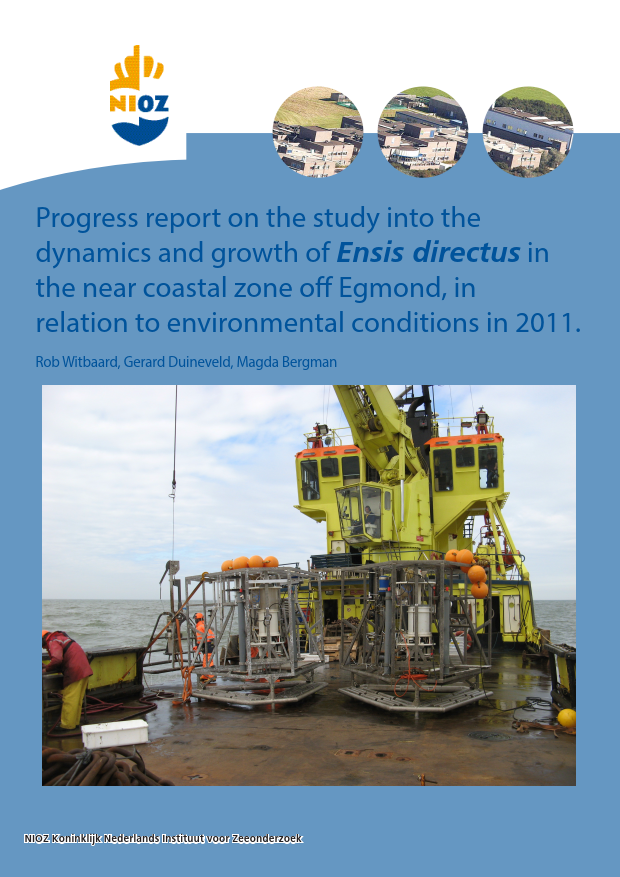Witbaard et al. 2012. Progress report on the study into the dynamics and growth of Ensis directus in the near coastal zone off Egmond, in relation to environmental conditions in 2011.
Preliminary conclusions. The data analyzed so far illustrate that there is a marked seasonal variation in the concentrations of chlorophyll and suspended particulate matter. Peak concentrations of SPM at 30 cm above the bottom exceed 2500 mg/L during storm events. Such events have been observed to occur throughout the year. Chlorophyll peak concentrations are mainly linked to the spring phytoplanton bloom. The measurement of SPM at four heights close to the bottom suggests that a “blanket” of suspended material is present. The dynamics and composition of this blanket appears to be moderated by the seasonal variations in primary production and hydrodynamics. Tidal and wind induced currents and waves cause resuspension and mixing of organic and inorganic light particles. The spring phytoplankton bloom causes a large seasonal difference in the quality of the available near bottom food. Variations in the levels of suspended mud over the year show that these variations are mainly controlled by wind induced waves and currents. Measurement taken during ongoing beach nourishments in June 2011 suggest that under the then prevailing weather conditions the supposed increase of suspended inorganic material is small when compared to storm events later in the year. The data illustrate that the spring bloom in April and May temporarily changes the characteristics of the resuspended material. Data on the valve movements of Ensis under varying mud concentrations suggests that maximum valve opening decreases with increasing mud concentrations. As such the results corroborate lab experiments at which decreasing clearance rates were found at increasing clay particle concentrations. The data suggest that Ensis directus utilizes the spring related increase in food quality, expressed as ratio between chlorophyll and mud mainly for soft tissue growth and gonadal development. The main spawning of Ensis in 2011 took place at or shortly after the spring bloom. The changes in average population shell size suggest that shell growth starts half way the summer at water temperatures above 15°C.

